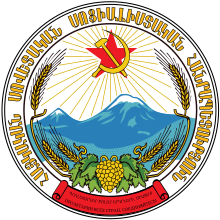Հայկ նահապետը, հայ ժողովրդի առասպելական հիմնադիրը։ Նկարիչ՝ Մկրտում Հովնաթանյան (1779–1846)։ Ետնանկարում պատկերված է Արարատը։ Ararat is pictured in the background.
Contents • • • • • • • • • • • • • • • • • • • • • • • • • • • • • • • • • • • • • • • • • • • Political borders Mount Ararat forms a near- between,,. Its summit is located some 16 km (10 mi) west of both the border and the border of the exclave of Azerbaijan, and 32 km (20 mi) south of the Armenian border.
The Turkish–Armenian–Azerbaijani and Turkish–Iranian–Azerbaijani are some 8 km apart, separated by a narrow strip of Turkish territory containing the road which enters Nakhchivan at. From the 16th century until 1828 the range was part of the Ottoman-Persian border; Great Ararat's summit and the northern slopes, along with the eastern slopes of Little Ararat were controlled by Persia. Following the and the, the Persian controlled territory was ceded to the Russian Empire. Little Ararat became the point where the Turkish, Persian, and Russian imperial frontiers converged.
This service is provided on News Group Newspapers' Limited's in accordance with our. Ezhednevnie uprazhneniya skripacha elizaveti gileljs. 679215 Registered office: 1 London Bridge Street, London, SE1 9GF. 'The Sun', 'Sun', 'Sun Online' are registered trademarks or trade names of News Group Newspapers Limited. To inquire about a licence to reproduce material, visit our site.
The current international boundaries were formed throughout the 20th century. The mountain came under Turkish control during the 1920. It formally became part of Turkey according to the 1921. In the late 1920s, Turkey crossed the Iranian border and occupied the eastern flank of Lesser Ararat as part of its effort to quash the, during which the Kurdish rebels used the area as a safe haven against the Turkish state. Iran eventually agreed to cede the area to Turkey in a. The Iran-Turkey boundary skirts east of Lesser Ararat, the lower peak of the Ararat massif. As of 2004 the mountain is open to climbers only with 'military permission'.
The procedure to obtain the permission involves submitting a formal request to a Turkish embassy for a special 'Ararat visa', and it is mandatory to hire an official guide from the Turkish Federation for Alpinism. Stoneman murders full movie torrent download free. Access is still limited, even for climbers who obtain the necessary permission, and those who venture off the approved path may be fired upon without warning. Names and etymology. Mount Ararat 3D Summit ice cap The on the summit of Mount Ararat has been shrinking since at least 1957. In the late 1950s, Blumenthal observed that there existed 11 outlet emerging from a summit snow mass that covered about 10 km 2 (3.9 sq mi). At that time, it was found that the present glaciers on the summit of Ararat extend as low as an elevation of 3,900 meters (12,800 ft) on the north-facing slope, and an elevation of 4,200 meters (13,800 ft) on its south-facing slope. Using pre-existing and data, Sarıkaya and others studied the extent of the ice cap on Mount Ararat between 1976 and 2011.

They discovered that this ice cap had shrunk to 8.0 km 2 (3.1 sq mi) by 1976 and to 5.7 km 2 (2.2 sq mi) by 2011. They calculated that between 1976 and 2011, the ice cap on top of Mount Ararat had lost 29% of its total area at an average rate of ice loss of 0.07 km 2 (0.027 sq mi) per year over 35 years. This rate is consistent with the general rates of retreat of other Turkish summit glaciers and ice caps that have been documented by other studies. Blumenthal estimated that the had been as low as 3,000 meters (9,800 ft) in elevation during the Late. Such a snow line would have created an ice cap of 100 km 2 (39 sq mi) in extent.
However, he observed a lack of any clear evidence of prehistoric other than those which were close to the 1958 glacier tongues. Blumenthal explained the absence of such moraines by the lack of confining ridges to control glaciers, insufficient debris load in the ice to form moraines, and their burial by later eruptions. Years later, Birman observed on the south-facing slopes a possible moraine that extends at least 300 meters (980 ft) in altitude below the base of the 1958 ice cap at an elevation of 4,200 meters (13,800 ft). He also found two morainal deposits that were created by a Mount Ararat valley glacier of Pleistocene, possibly () age, downvalley from.
The higher moraine lies at an altitude of about 2,200 meters (7,200 ft) and the lower moraine lies at an altitude of about 1,800 meters (5,900 ft). The lower moraine occurs about 15 kilometers (9.3 mi) downstream from Lake Balık.

Both moraines are about 30 meters (98 ft) high. It is suspected that Lake Balık occupies a glacial basin. The first recorded ascent of the mountain in modern times took place on 9 October [ 27 September] 1829. The naturalist of the arrived at in mid-September 1829, almost two years after the Russian, for the sole purpose of exploring Ararat. The prominent Armenian writer, then a deacon and translator at Etchmiadzin, was assigned by Catholicos Yeprem, the head of the Armenian Church, as interpreter and guide.